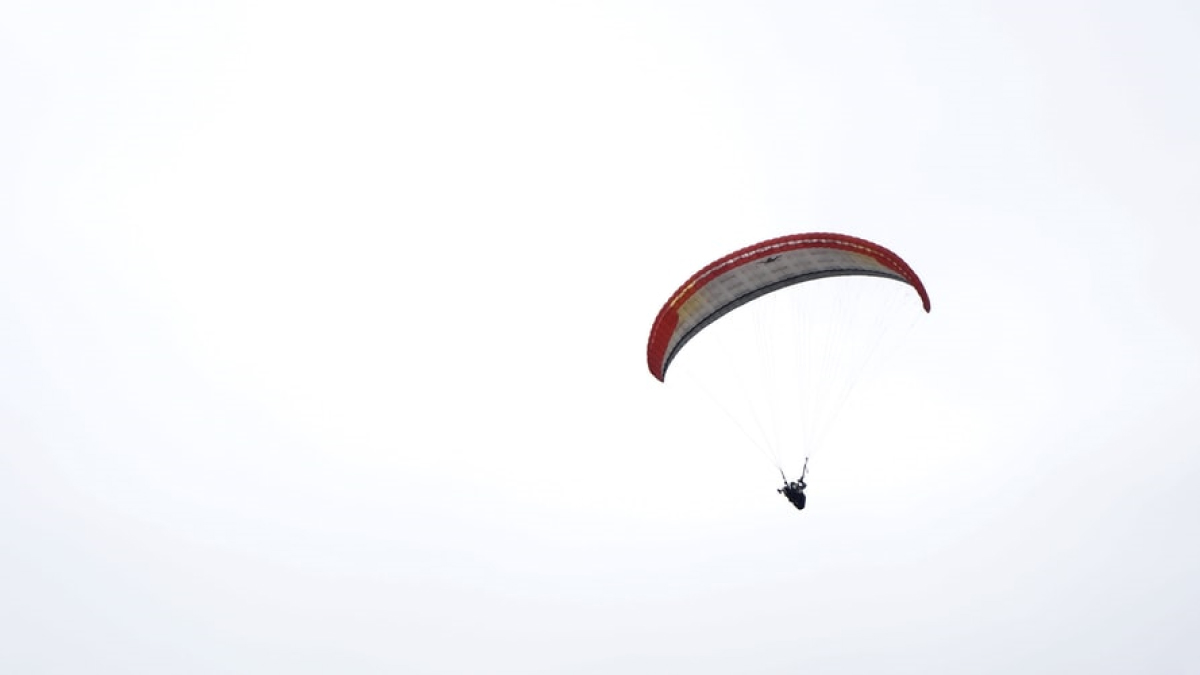“Desperate Times Call for Desperate Measures”
Go Airlines – the no-frills carrier controlled by the Wadia Group – has just filed for an IPO. Devastated by the ongoing pandemic, the airline sector has struggled with rising costs. To stay afloat, promoters of India’s fourth-largest airline have chosen to tap the primary market. Should you invest?
Short Answer: Promoters prefer to offer a slice of ownership in their enterprises when equity market conditions are favourable and they are able to set the price on the back of strong recent operational performance. Go Air doesn’t have that luxury as it needs to raise money quickly to reduce debt. Compared to its peers, Go Air has struggled, both to maintain market share, and to run operations profitably. Frequent leadership and auditor changes, disputes with promoters over brand rights haven’t helped. While we await the IPO price bands to be announced, this is not a public issue to hold your breath for. Read on for our detailed take.
The Offer
The company is looking to raise close to ₹ 3,600 crore via a fresh issue. The funds will be used by the company for debt repayment, paying lessors, and for repayment of dues to Indian Oil Corporation.
As of April 19, 2021, the company had a total borrowing of ₹ 2,956 crore and from the IPO proceeds, it intends to retire close to 68% of this debt.
The company also intends to replace the letter of credits with a cash deposit of ₹ 279 crore which is issued to aircraft lessors towards securing lease rental payments and future maintenance of aircraft. Of the remaining, ₹ 255 crore will be used to pay past outstanding fuel bills to IOCL and the balance for general corporate purposes.

Just two days before filing the DRHP, the company raised some funds from promoters at ₹ 130/share. There is no indication from the company about pricing of the IPO itself. If we value the company at ₹ 130 per share, which we believe might be the lowest it might consider, it would be valued at close to ₹ 2,600 crore.
If the company plans to raise ₹ 3,600 crore at the same share price, the dilution will be huge. Promoter shareholding will come down to 42% from the current 100%.
The Business
Founded in 2005, GoAir, which has been rebranded as Go First, claims to be an ultra-low-cost carrier focused on maintaining a low-cost base and high utilization of our modern and fuel-efficient fleet. It also claims to be one of the fastest-growing airlines in India, with an increase in domestic market share from 8.8% in FY18 to 10.8% in FY20.
The company has a fleet of 55 aircraft, of which 46 aircraft are A320 Neo and 9 are A320 Ceo models. The average age of their aircraft is 3.7 years, which according to CAPA, is the youngest average fleet age globally.
It has an order book of 98 A320 Neo aircraft and expects to take delivery of eight additional A320 Neo in FY22 and 14 each in FY23 and FY24. By the end of FY24, the company aims to keep its fleet solely of A320 Neo aircraft.

Having a uniform fleet will help the company reduce its operational costs and allow the company to use any aircraft for any route, thereby simplifying and increasing the flexibility of flight scheduling arrangements. Fleet uniformity lowers costs as it standardises the requirements of pilots and maintenance teams and allows the company to have common maintenance procedures, training, and spare-part inventories.
The company finances its aircraft on operating leases using a sale-and-leaseback structure. Under this structure, a third-party lessor directly pays the aircraft manufacturer the agreed purchase price for each delivered aircraft to the airline. The title of the aircraft resides with the lessor, while it is used by the airline company. At the end of the lease, the aircraft is returned to the lessor.
Under the lease agreement, the airline pays a monthly rental, comprised of a base and supplementary rental. Base rentals are either a fixed or variable monthly amount. Supplementary rentals vary from lease to lease and are largely based on aircraft utilization, which is calculated based on the number of hours or cycles operated in each month. For using a specific manufacturer’s aircraft, the airline receives incentives from the manufacturer upon delivery of every aircraft, engine and upon completion of certain milestones.

Though for an airline, ticket booking is and will continue to remain a major source of revenue, nowadays, they are equally focusing on ancillary revenues as they are a high-margin business.
Ancillary revenue primarily comes from cargo service, seat selection, meals, excess baggage fees, multiple seat bookings for safe distancing, priority check-in, fare lock for holding fares for up to 15 days, and cancellation fees. The company is also in process of launching additional services such as packaged holidays, online merchandise, car rental, lounge, trip assurance, baggage delivery, and others.
The Industry & Covid-19 Situation
The Indian aviation market was once upon a time the fastest growing globally. However, not once but twice the growth of the Indian aviation market was jolted by Covid-19. Once during the first wave of the virus in the March-September 2020 period and then now during the second wave.
The aviation industry was on its way to recovery, post the first wave, with rising month-on-month passenger traffic. India’s Covid-19 had hit a record peak in the middle of September last year when it reported more than a million active cases. Since then, the number of daily cases has been steadily declining. However, a fresh spurt in Covid-19 cases and travel restrictions by states has derailed the fragile recovery of the domestic civil aviation sector – one of the worst hit by the pandemic.
Several states have made a negative covid test report mandatory for those flying from regions facing a recurrence of coronavirus. The covid tests mandated by some states have had a negative impact on air ticket bookings.
Over FY15 to FY20, average daily air traffic in India doubled. During the Covid period, air traffic did manage to reach 70% of its earlier levels, but again slipped lower and is currently around 20% levels.
The Indian aviation market mainly comprises one state-owned operator – Air India and five private players – IndiGo, SpiceJet, Go First, Air Vistara, and Air Asia.
IndiGo is the largest airline in the country and has been continuously growing, while SpiceJet is the second-largest airline which has more or less maintained its market share. The state-owned operator has been losing market share and is most likely to be privatised anytime soon. Jet Airways which was once upon a time, India’s largest full-service carrier, shut down its operations on April 17, 2019, as it struggled to keep itself afloat. The airline might revive its operations as a restructuring under the new insolvency and bankruptcy court is undergoing.
The Tata Group owns a majority stake in two airlines – Air Vistara and Air Asia. Both these companies started operations around FY15. Air Vistara is a full-service carrier, while Air Asia is a low-cost carrier. According to media reports, The Tata Group is most likely to buy Air India. With this, the group will own three airlines, which if merged would emerge as a strong player.
Though Go First’s DRHP, claims itself to be one of the fastest-growing airlines in India over FY18-20, the market share data provided by the regulator – DGCA – begs to differ.
In fact, it is the slowest growing private airline over that time period.

Since the onset of the Covid-19 pandemic in India, the market share scenario has changed. IndiGo has benefitted during this time period, due to its strong balance sheet and low-cost structure. The airline has grabbed market share largely from Go First which had cut down its operations in an effort to conserve cash.
However, this shift in market share could well likely be temporary.
For an airline, 70% of its cost is dollar-denominated, while fuel prices account for nearly 35-40% of its total costs. Fuel expenses are also dollar-denominated. While signing contracts with aircraft leasing firms or aircraft maintenance firms, airlines generally have to agree to make payments in US dollars. As most of the airlines predominantly operate in the domestic market, a depreciating rupee increases the cost significantly.
Since December 2020, the Indian Rupee has remained volatile, while the average aviation turbine fuel prices across four metros have increased by 33%, due to a rise in crude prices.
This increase in costs wouldn’t have been a problem, had it not been for subdued demand recovery and muted ticket prices. Two-months forward ticket prices on 20 major routes in India have continued to remain weak.
Financials & Key Operational Data
The financials of Go Airlines over FY18 to 9MFY21 have been prepared by FOUR auditors. Not collectively, but separately. The company has changed its auditors every year. MSKA & Associates are the current auditors, while Walker Chandiok & Co., Bansi S. Mehta & Co., and Kalyaniwalla & Mistry were the previous auditors. Frequent auditor changes have rarely been a promising sign for India Inc.
It has been a loss-making company. Over FY18 to 9MFY21, the company has been continuously reporting losses, because of which it has a negative net worth of ₹ 1,962 crore. However, post IPO, net worth will most likely be positive, as the company is looking to raise ₹ 3,600 crore via fresh issue.
As of 9MFY21, the company’s cash balance has been precariously low at just ₹ 11.6 crore. According to the DRHP, in 2021, the company has to repay liabilities (including lease liabilities) worth ₹ 4,897 crore – nearly 80% of FY20 revenues. Nearly 44% of this due amount pertains to lease liabilities and the company is of the view that it will be able to defer these payments. Lease liabilities payment does not form part of the debt.
The company has a debt of ₹ 2,956 crore. Most of this will be taken care of by the fundraise via IPO.
Over FY18-20, the company’s revenue grew at a CAGR of 25.5% largely on the back of higher capacity. The higher capacity was also deployed by the company on international routes. During the same time period, the company’s capacity increased by 30.2%.
A revenue growth lower than the capacity growth generally means lower passengers were on board, i.e., its passenger load factor (capacity utilisation) has declined.
The company’s EBITDA was impacted due to foreign exchange losses in FY20. This was because the Indian currency depreciated by more than 8% against the US Dollar. However, adjusting for foreign exchange losses, its EBITDA grew by only 6.8% over FY18-20.

In the airline business, revenue and cost per available seat kilometer, i.e., unit revenue and unit cost, are more relevant and followed as compared to total revenue or cost.
- Ticket revenue has come down owing to lower passenger load factors.
- Ancillary revenue has increased due to strong growth in cargo revenue.
- Aircraft repair and maintenance, finance cost, depreciation and other expenses have increased due to the fixed nature of costs.
- Employee costs has remained relatively stable in 9MFY21, because the company implemented salary cuts, furloughed 3,800 employees from April to June 2020 and reduced headcount.

Lower profitability than peers
IndiGo is the closest peer to Go First in terms of business model and aircraft in operation. SpiceJet is also an LCC but uses a different type of aircraft.
Over FY18-20, IndiGo’s total revenue grew at a marginally lower rate compared to Go First. However, SpiceJet’s growth has grown much faster than Go First. Moreover, for IndiGo, revenue growth has been in line with capacity growth and for SpiceJet, the revenue growth was higher than capacity growth. This means that IndiGo was able to maintain its passenger load factor and SpiceJet was able to increase its passenger load factor during this time period.
Go First’s total expenses grew at a much higher rate, while its EBITDA grew at a much lower rate when compared to IndiGo and SpiceJet.

Comparing operational efficiency
- In FY20, Go First’s ticket and ancillary revenue per available seat kilometers were lower than its peer.
- Go First’s fuel cost and repairs and maintenance cost was at par with IndiGo – most probably because they use the same fleet.
- For an “ultra-low-cost carrier”, Go First’s total expenses were surprisingly the highest when compared to other “low-cost carriers” – IndiGo and SpiceJet.

Final Thoughts on Go First: A weak player in an uncertain industry
The history of Indian aviation is littered with dead airlines. According to a Times of India article, 13 airlines have gone bust in India in the past 22 years. Even now with six major players, the Indian aviation market continues to be a tough nut to crack as it is not only highly competitive but also because a major part of its cost structure depends on uncontrollable external factors.
At this moment, the industry is facing tough challenges from weak demand, rising fuel prices, and the depreciating Indian currency against the US dollar. At the start of the pandemic, the market was expecting consolidation in the aviation industry, due to the weak liquidity conditions of few airlines in India. However, nothing has changed so far. With no consolidation in the airline industry so far, as and when air traffic starts increasing, a fare war looks imminent, as players would look to grab market share. This could make the situation more precarious.
With these factors in play, the path to recovery just got a bit longer and turbulent for Indian airlines.
A lot of investors consider airlines a recovery play. The reasoning is pent-up leisure demand could lead to quick recovery once the lockdowns ease. However, last year’s recovery pattern is not supportive. Even at its peak since the first wave of Covid-19, i.e., in February 2021, air traffic only recovered to 70% of pre-pandemic levels.
There is also an argument that the vaccination drive might lead to a quicker recovery. But we can’t tell how long it will take for the vaccination drive to complete. To add to the strain, Governments are preparing for a third wave.
All this leads to one certain thing, i.e., air traffic demand recovery is highly uncertain.
On the company-specific front, Go Air has grown slower than peers (Go Airlines was launched before IndiGo), ongoing dispute with the promoter over brand rights, and frequent changes in statutory auditor, CEO, and CFO, do not make a compelling case for investment.
For now, the company has just filed its DRHP. Till the time it comes out with an IPO, a lot of things might change. However, until and unless, the shares are offered at a very cheap valuation, we do not see a case for consider investing in the IPO.
We’ll revisit this piece when the IPO price bands are announced.
Other Suggested Reading:
Grounded In 2021: Airlines need more run-way
IndiGo: Four Consecutive Quarters Of Losses
What’s the Story with IndiGo Valuations Flying High?
Recovering Air Traffic Still Not A Sign For Airlines To Cheer
Why IndiGo Needs To Raise Funds?
How The Aviation Market Is Performing Amidst Covid-19
This article is for information only, and should not be considered as a recommendation to buy or sell any stocks.
For immediate access to probably, the best platform in India for active investors, join Capitalmind Premium: Model Portfolios, Premium Research, and a vibrant member community.
For any questions, tweet / DM us on twitter or email us at premium [at] capitalmind [dot] in.








